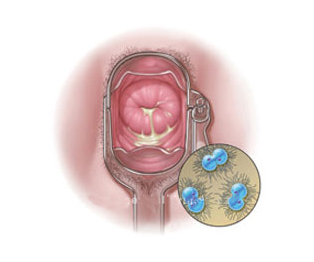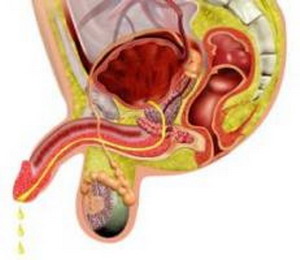Gonorrhea
Gonorrhea is a sexually transmitted disease and it is caused by the bacterium Neisseria gonorrhoeae. This bacterium is also shortly called as GC. Gonorrhea is also named as ‘clap’. Generally if this disease is not treated well it spreads throughout the body and causing damage to joints and heart valves. Normally this is not spread by using the toilet and bathrooms used by infected persons.

The infection is transmitted from person to person through vaginal, oral and anal sexual relations. Safe sex transmission of the disease is very rare. The infection is transmitted by means of body fluid like semen and vaginal secretions.
The appearance of symptoms occurs after 4 to 6 days after being infected. The incubation period is 2 to 30 days. Very rare people affected by this disease show no symptoms at all during the life period.
About 30 to 60 per cent of the people affected by gonorrhea are asymptomatic or they may have sub clinical disease.
Men, usually have urethral discharge in yellow or green color is the common symptom. The urination is frequent and painful. This infection may spread to prostate,epididymis and seminal vesicle and it may cause fever and pain in the abdomen. Groin and testis become swollen in severe cases. Penis turns red in color in some cases. The male untreated gonorrhea leads to infertility.
Women affected by gonorrhea normally have vaginal discharge, painful and frequent urination, bleeding in between menstrual period or bleeding after sexual intercourse. Cervix shows inflammation with pus associated with abdominal pain. burning sensation appears in the vaginal region and the normal color of the vagina changes to red. Pelvic inflammatory disease (PID) is common by spread of infection in to uterus, fallopian tubes and ovaries. Untreated condition causes infertility in women.

Various antibiotics used in gonorrhea:
Amoxicillin, ampicillin, cefixime, cefotaxime, azithromycin, cefpodoxime, cefoxitin, ceftriaxone, ciprofloxacin, levofloxcin and ofloxacin.
A third generation cephalosporin – ceftriaxone is used commonly.fluoroquinolones-ciprofloxacin, ofloxacin are also widely used due to its high efficacy. Tetracycline now shows high drug resistant in many countries. Though many antibiotics successfully cure gonorrhea, there is increasing incidence of drug resistance and it becomes very difficult to cure the disease. More over, the person affected by gonorrhea almost infected by Chlamydia and other STDs. In these cases, it is important to treat the disease with all medications for other STDs and Chlamydia. Other wise it is very difficult to cure gonorrhea. Gonorrhea is treated and cured fully but the damages already caused by the infection can not be reversed or repaired. Also this disease reappears if the cured person has sexual contact with the gonorrhea infected person.
In men, the complications arise and inflammation occurs in urethra, testis, prostate gland and epididymis if the disease is untreated.
In women, the complications occur in uterus by inflammation and PID results. It causes infertility. There are many other complications like periheptitis, arthritis ( joints of finger, wrists, toes and ankles). Septic abortion occurs in some cases. Neonatal blindness and adult blindness is also most common. These unwanted complications appear in the later stages if this disease is not treated.
CDC reports that about 600,000 are newly recorded for gonorrhea every year in the United States. Many countries started national control programme for gonorrhea which resulted in decline of the new cases. It is understood that mercury was the first medicine used to treat gonorrhea. Silver nitrate was widely used in the 19th century and first antibiotic came to use in the year 1940.
Prevention of this disease requires personal awareness in having safe sex contacts. Usage of safety condoms plays an important roll in avoiding the disease.
